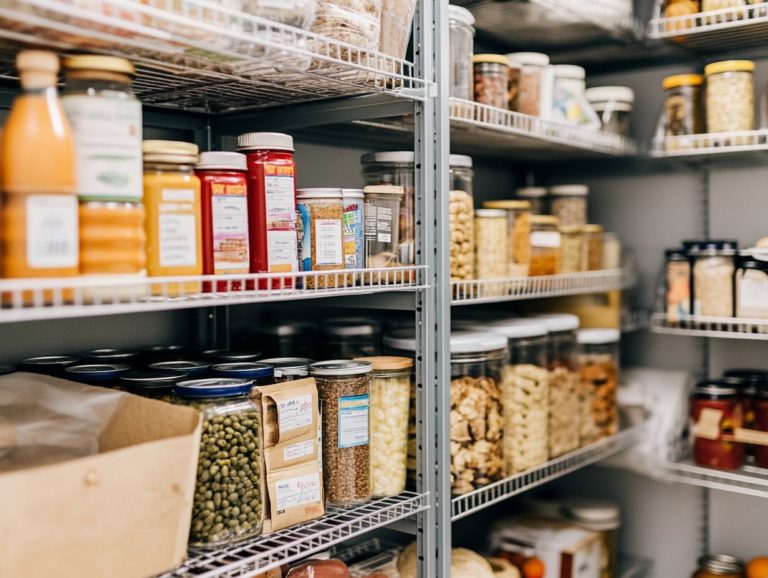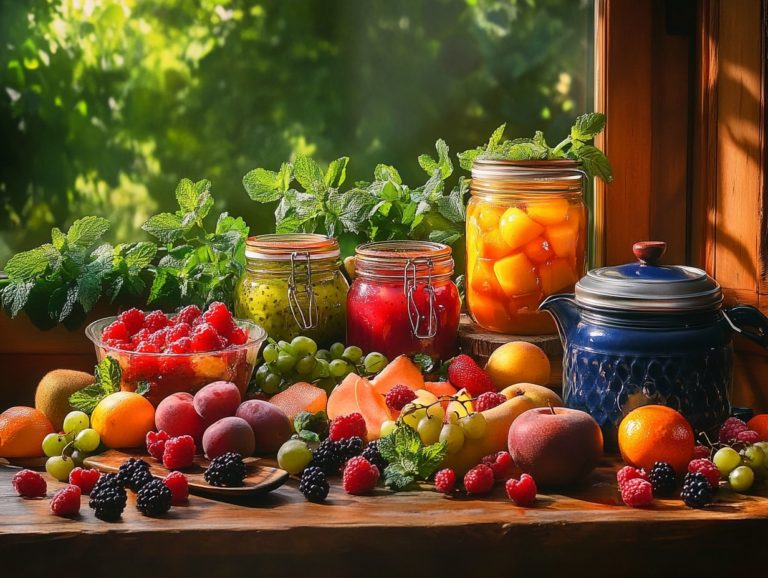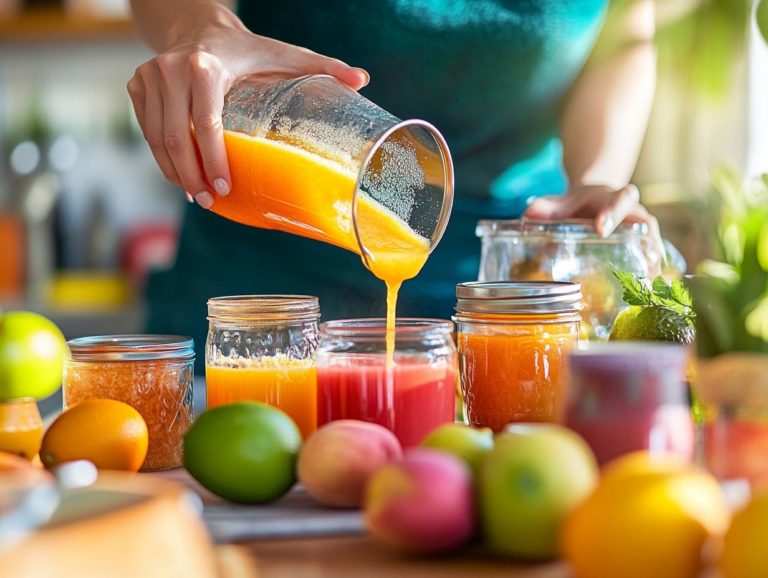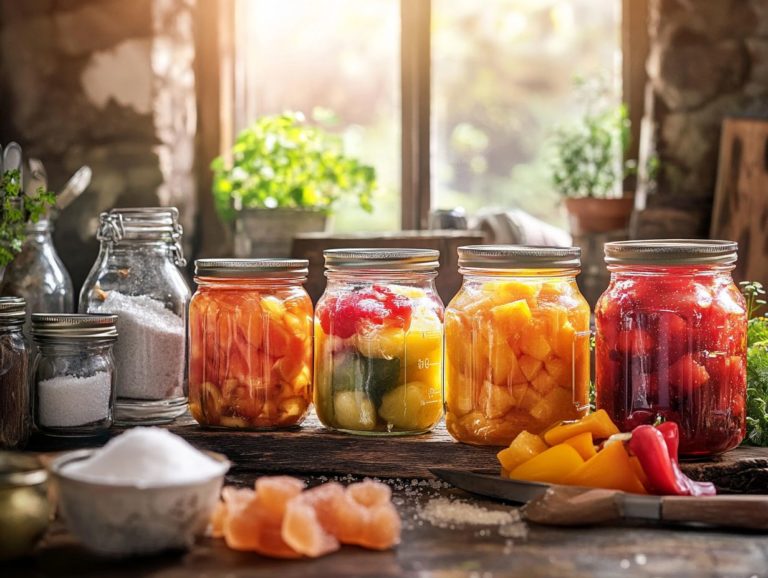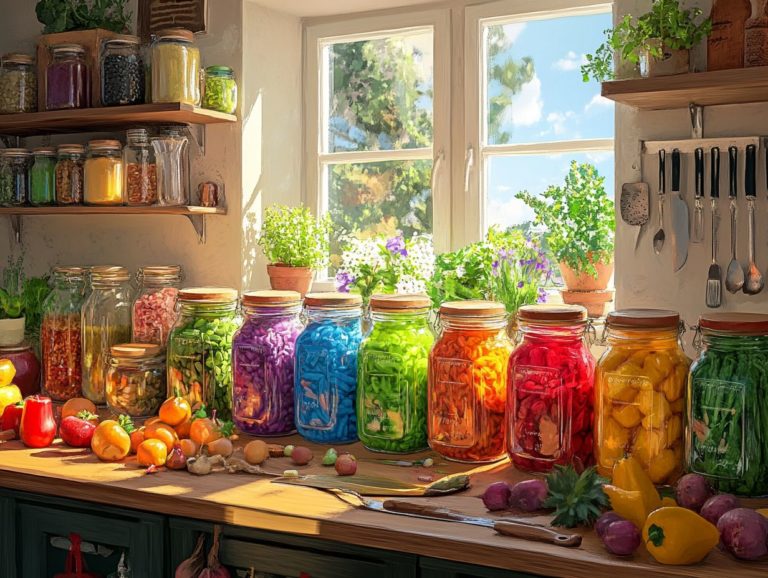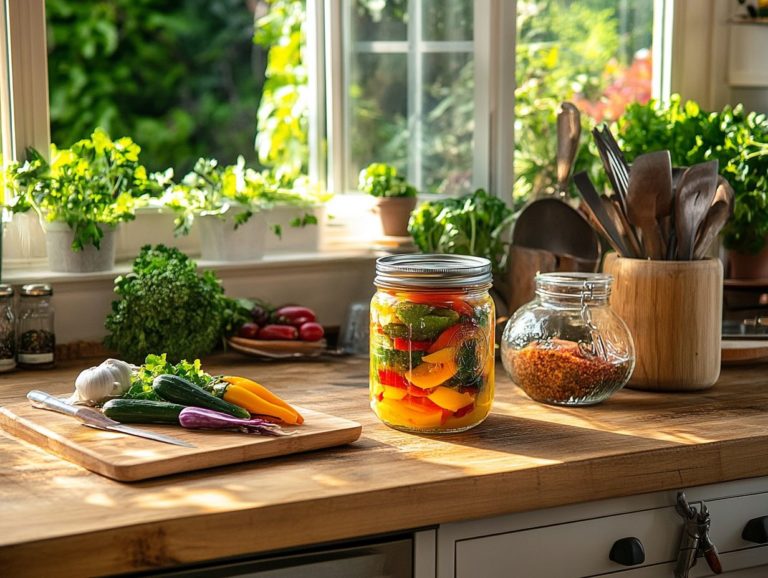Troubleshooting Common Canning Problems
Canning is an excellent way to preserve your favorite fruits and vegetables, but even seasoned home canners encounter their fair share of challenges.
From jars that refuse to seal properly to unexpected spoilage, grasping the common issues in canning is crucial to ensure your hard work doesn t go to waste.
This article delves into frequent canning problems, offers preventive tips, provides troubleshooting advice, and highlights the best tools and techniques for achieving success.
You will learn how to store your canned goods properly to keep them fresh longer. Get ready to boost your canning skills and enjoy your homemade preserves like never before!
Contents
- Key Takeaways:
- Common Canning Problems
- Preventing Canning Problems
- Troubleshooting Specific Problems
- Tools and Techniques for Successful Canning
- Proper Storage and Shelf Life
- Frequently Asked Questions
- What are some common problems that can arise during the canning process?
- How can I prevent jars from not sealing properly?
- What should I do if I notice mold or bacteria growth in my canned food?
- Why is my canned food discolored?
- What should I do if my canned food has a strange odor?
- How can I prevent common canning problems?
Key Takeaways:
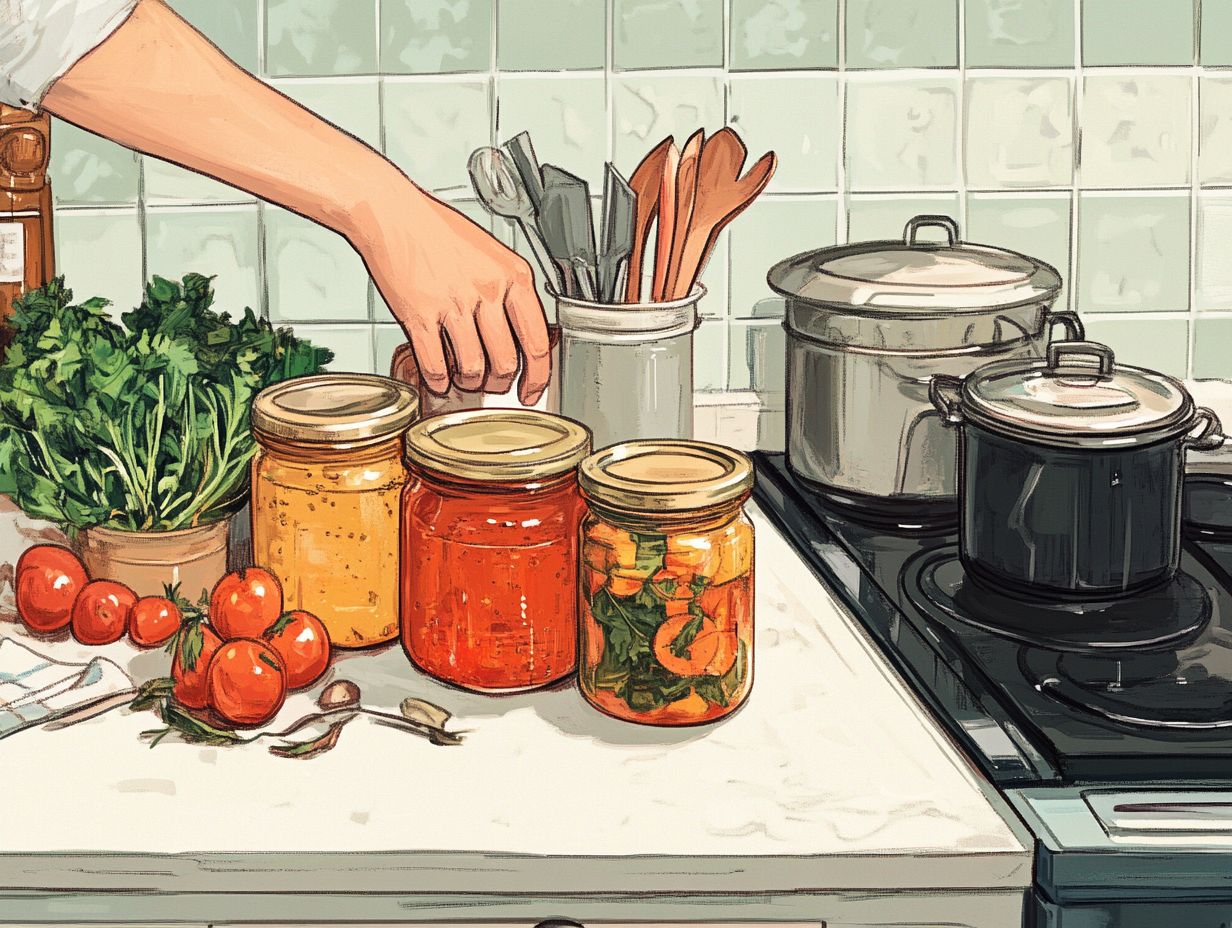
- Ensure proper storage and shelf life by following best practices for preserving food safely.
- Prevent canning problems by using essential equipment and methods while avoiding common issues with helpful tips.
- Troubleshoot specific problems by identifying and resolving common issues with the help of tools and techniques for successful canning.
Get started with your canning journey today your pantry will thank you!
What is Canning?
Canning is an art of food preservation that involves sealing your favorite foods in jars, keeping spoilage at bay and allowing you to savor the goodness of fruits, vegetables, jams, and jellies for extended periods. This classic method not only prolongs the shelf life of perishable items but also allows you to relish the flavors of seasonal produce all year round.
By employing the right canning techniques and adhering to USDA guidelines, which help you keep food safe during the canning process, along with resources from the Cooperative Extension Service, you can ensure keeping food safe while crafting delightful homemade preserves.
Among the various canning methods, water bath canning and pressure canning truly shine for their effectiveness and distinct applications. Water bath canning is used for high-acid foods like tomatoes and fruits. Pressure canning is essential for low-acid foods like green beans and corn, using high-pressure steam to eliminate harmful bacteria.
These methods have evolved over time, reflecting significant advancements in food safety and enabling you to create a stunning array of vibrant preserves that capture the peak taste of fresh produce throughout the year.
Common Canning Problems
During the canning process, you may encounter common problems that can lead to frustrating issues such as jars failing to seal, runny jams, or spoiled contents. For guidance on resolving these issues, refer to troubleshooting your canning process. These complications can jeopardize both the quality and safety of your preserved foods.
Understanding these challenges is crucial for achieving a successful canning experience. By recognizing signs like liquid loss, food darkening, cloudy liquid, or floating fruit, you can take the necessary corrective actions. If you encounter issues, knowing what to do if your canner malfunctions will help you maintain the integrity of your delightful homemade creations and ensure they are safe to enjoy.
Overview of Common Issues
The overview of common canning mistakes encompasses a range of problems that can compromise the quality and safety of your preserved foods. Think jars that won’t seal, fruit that floats, and jars that spoil—all of which can undermine the value of your hard work. Addressing these common canning challenges is essential for preserving the integrity of your cherished fruits and vegetables while ensuring food safety throughout their shelf life.
Each issue has its specific causes. For instance, jars that fail to seal often stem from improper lid placement or food particles lingering on the rim, which can lead to spoilage and render the contents unsafe for consumption. Floating fruit, a frequent sight in canned goods, occurs when air is trapped during the packing process, resulting in uneven distribution that affects texture. Spoiled jars may arise from inadequate processing times or temperatures, allowing harmful bacteria to flourish.
To tackle these problems effectively, you’ll need to pay meticulous attention to detail during preparation and cooking. Adhering to reliable guidelines for each canning recipe is crucial for achieving successful and safe results.
Preventing Canning Problems
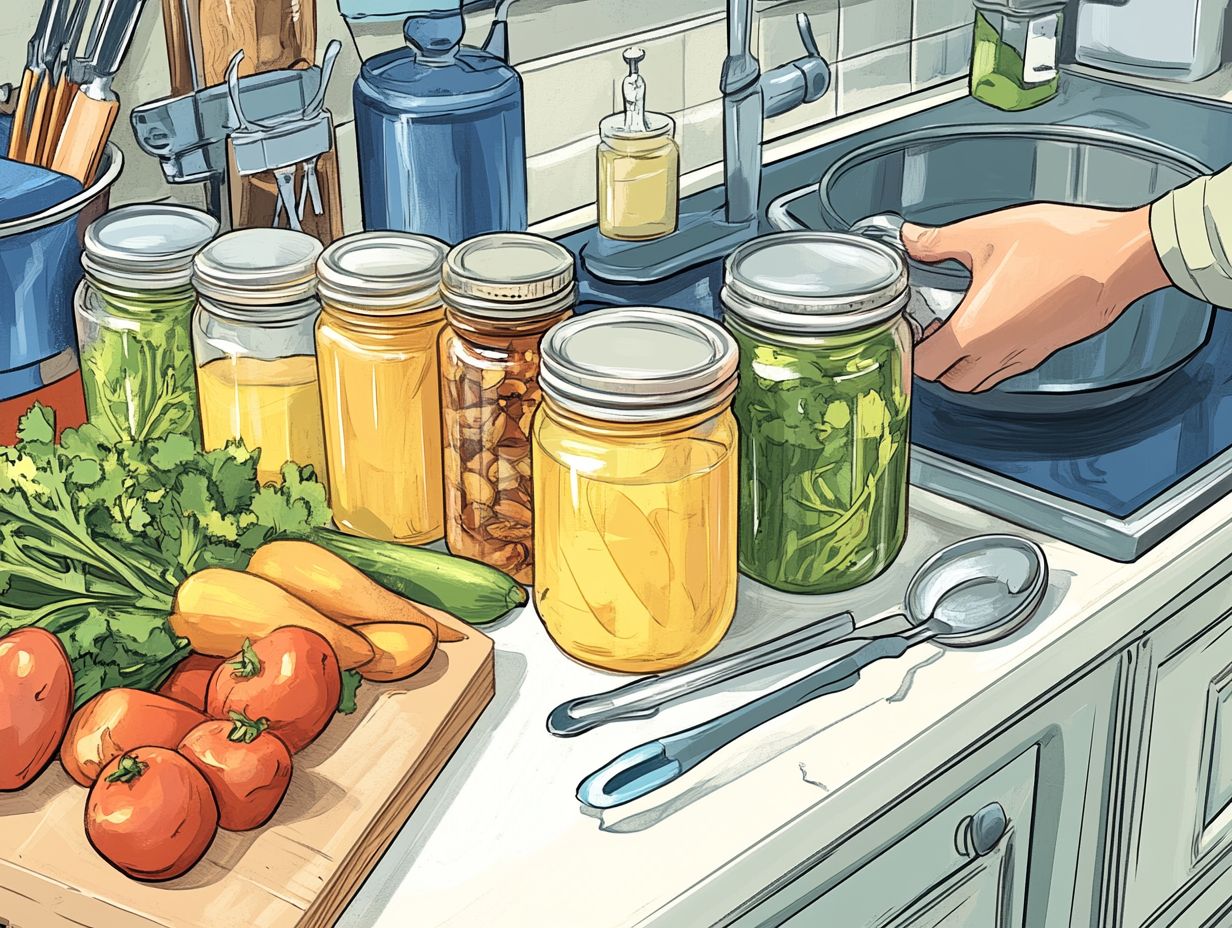
Preventing canning problems is crucial for ensuring successful food preservation. Embrace best practices such as utilizing clean jars, measuring headspace—the space between the food and the lid in a jar—accurately, and eliminating air bubbles. For further guidance, check out the most common canning questions. These steps safeguard the safety and quality of your home-canned produce.
By taking proactive measures in line with USDA recommendations, you can significantly diminish the risk of common pitfalls. This diligence helps your jars remain sealed and ensures that your preserved foods retain their freshness and flavor for extended periods.
Tips for Avoiding Issues
To sidestep common canning issues, adopt practical tips such as ensuring accurate headspace measurements, using tested recipes, and knowing how to remedy runny jam. Additionally, understanding how to address excessive canning liquid can further enhance your results. Following these guidelines elevates the flavor and texture of your preserves while keeping in line with food safety standards.
Measuring headspace accurately is essential; it allows for proper sealing and prevents overflow during processing. When selecting recipes, prioritize those certified by reputable sources for reliable outcomes.
If you find yourself with a runny jam, don t panic. Simply reheat the mixture and add some pectin or a squeeze of lemon juice to thicken it up. Familiarizing yourself with these techniques leads to more successful results, making each jar a true testament to your culinary prowess.
Troubleshooting Specific Problems
When troubleshooting specific canning issues, identify the root causes of problems like runny jams, cloudy liquid, and spoiled jars. Referring to troubleshooting for better canning results can enable you to implement effective solutions and restore the quality of your preserved foods.
Address these challenges systematically to improve your canning skills for future projects. Act now to keep your fruits and vegetables stored safely and delicious.
Identifying and Resolving Common Issues
Recognizing and resolving common canning issues like runny jams, darkening food, and floating fruit is essential for maintaining the quality and safety of your preserved goods. For specific guidance, check out troubleshooting thickening issues in canning. By learning to recognize these signs, you can take timely action to rectify problems and maintain the integrity of your carefully crafted preserves.
It’s vital to understand that careful checking of the canning process significantly reduces the likelihood of encountering these issues. For example, when boiling jar lids, monitoring the temperature can prevent undesirable outcomes like failed seals. If you notice separation in a fruit preserve, adjusting the sugar-to-fruit ratio might restore its intended texture.
Regularly testing your equipment, such as pressure canners for accurate pressure levels, is another practical step to ensure an efficient canning experience. By integrating these techniques, you can enjoy a more successful and enjoyable canning journey overall.
Tools and Techniques for Successful Canning
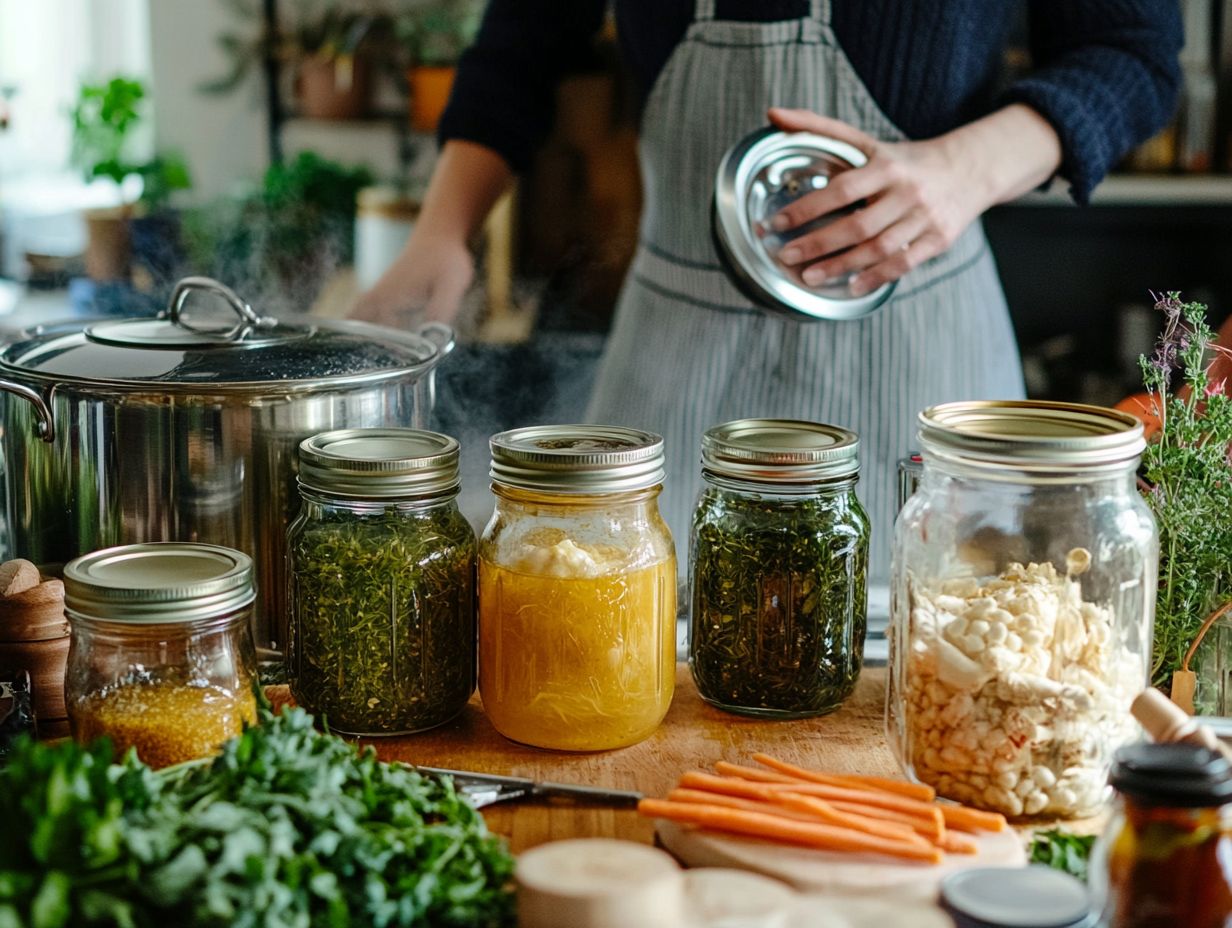
The tools and techniques for successful canning are crucial to your culinary pursuits. This includes methods like pressure canning and boiling water processing, which are essential for ensuring food safety and preserving the quality of your fruits and vegetables.
Choosing the best tools is key to your canning success! The right equipment jars, lids, and canning pots plays a vital role in the canning process. Superior tools enable you to achieve optimal results while minimizing the risk of spoilage.
Essential Equipment and Methods
Essential equipment for canning includes tools like a pressure canner, boiling water canner, and high-quality jars. Each is critical for your success in food preservation. Mastering the correct usage of these methods allows you to effectively process your fruits and vegetables, locking in their flavor and preventing spoilage.
A canning funnel is your ally in preventing spills and maintaining cleanliness. A jar lifter is essential for safely handling hot jars. You ll find that a magnetic lid lifter simplifies the tricky process of placing lids on jars. A bubble remover is invaluable for eliminating air pockets, ensuring a perfect seal.
Regularly inspecting your equipment for wear and tear is crucial. Proper maintenance can significantly extend the life of these tools. Choosing the right canning method whether water bath or pressure canning is vital based on the acidity of the food you re preserving. This choice directly impacts both food safety and quality.
Do not underestimate the importance of adhering to recommended safety protocols. This diligence ensures that your food remains safe for consumption over an extended period.
Proper Storage and Shelf Life
Proper storage and a keen understanding of shelf life are essential for ensuring the quality and safety of your canned goods. Engaging in incorrect practices can lead to food spoilage and potential health risks.
By following simple rules for storing jars and regularly monitoring their condition, you can savor your delicious preserves long after the canning process has concluded.
Best Practices for Preserving Food Safely
You must implement best practices to ensure your food stays fresh and delicious! Preserving food safely is essential for ensuring the longevity and quality of your canned goods while protecting yourself against foodborne illnesses. By following recommended storage methods and keeping an eye on the shelf life of your preserves, you can fully enjoy seasonal fruits and vegetables while minimizing risks associated with improper canning.
Understanding the ideal storage conditions is crucial. Place your canned items in a cool, dark space to significantly extend their shelf life. Make it a habit to regularly check for signs of spoilage, such as bulging lids or unusual odors. These indicators can alert you to potential hazards. Familiarizing yourself with expiration timelines will help prevent the consumption of unsafe products.
Remember, food safety isn’t a one-time task. Staying vigilant about these practices allows you to savor the fruits of your labor with confidence and peace of mind.
Frequently Asked Questions
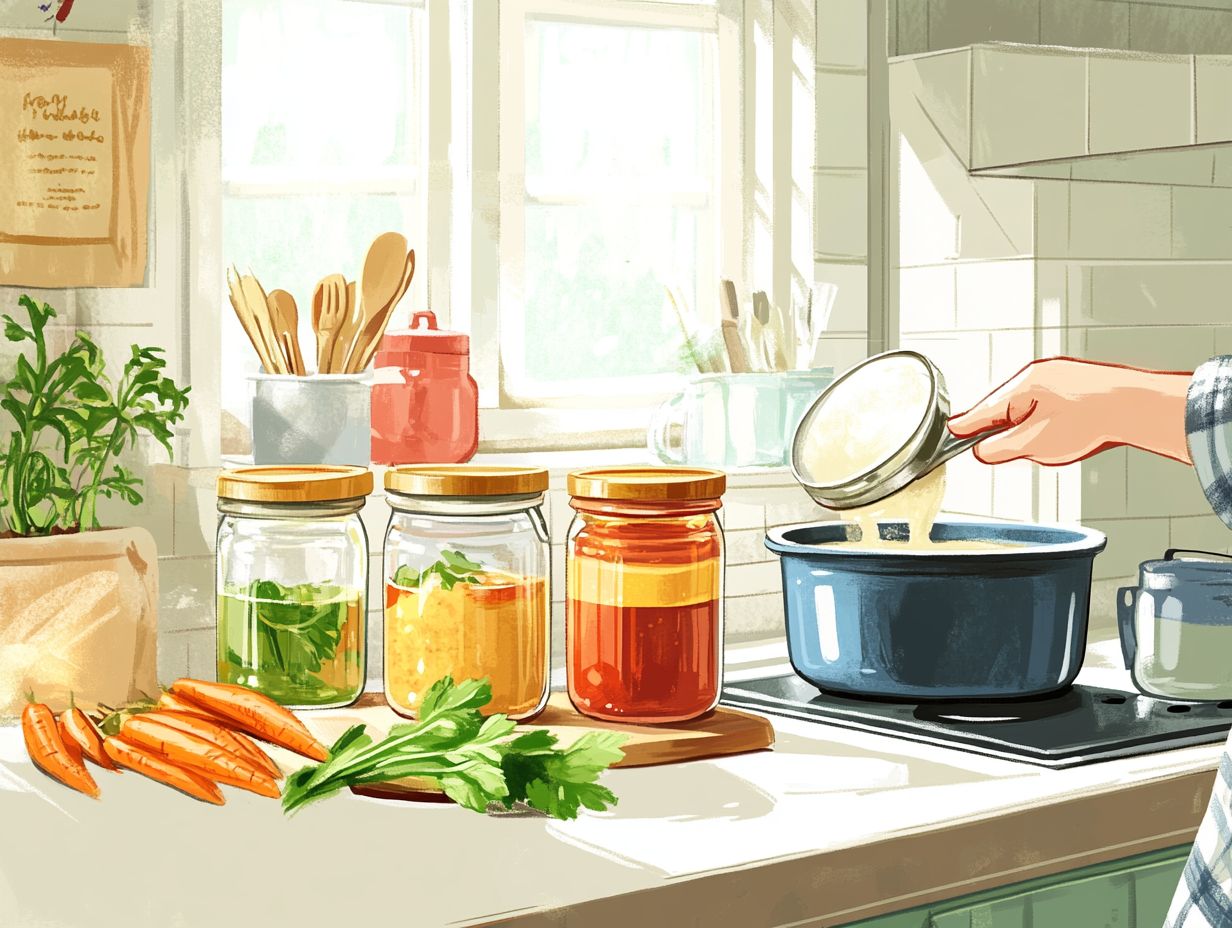
What are some common problems that can arise during the canning process?
Some common problems include jars not sealing properly, mold or bacteria growth, and food discoloration.
How can I prevent jars from not sealing properly?
Ensure to clean the jar rims and lids thoroughly before sealing and follow the correct headspace measurement for the specific food being canned.
What should I do if I notice mold or bacteria growth in my canned food?
Throw it away immediately you don t want to risk your health! Make sure to properly clean and sanitize your canning equipment before attempting to can again.
Why is my canned food discolored?
Discoloration can be caused by using overripe or underripe fruits or vegetables, improper blanching before canning, or using old or contaminated canning equipment.
What should I do if my canned food has a strange odor?
If the food smells sour or off, do not consume it. This could be a sign of spoilage or bacterial contamination. Discard the jar and properly clean your canning equipment before trying again.
How can I prevent common canning problems?
Follow the recommended processing times and methods for the specific food being canned, use fresh and high-quality ingredients, and properly clean and sanitize all equipment before and after canning.
Ready to start canning? Gather your supplies, follow these tips, and enjoy your homemade preserves! Share your experiences with friends and family!

